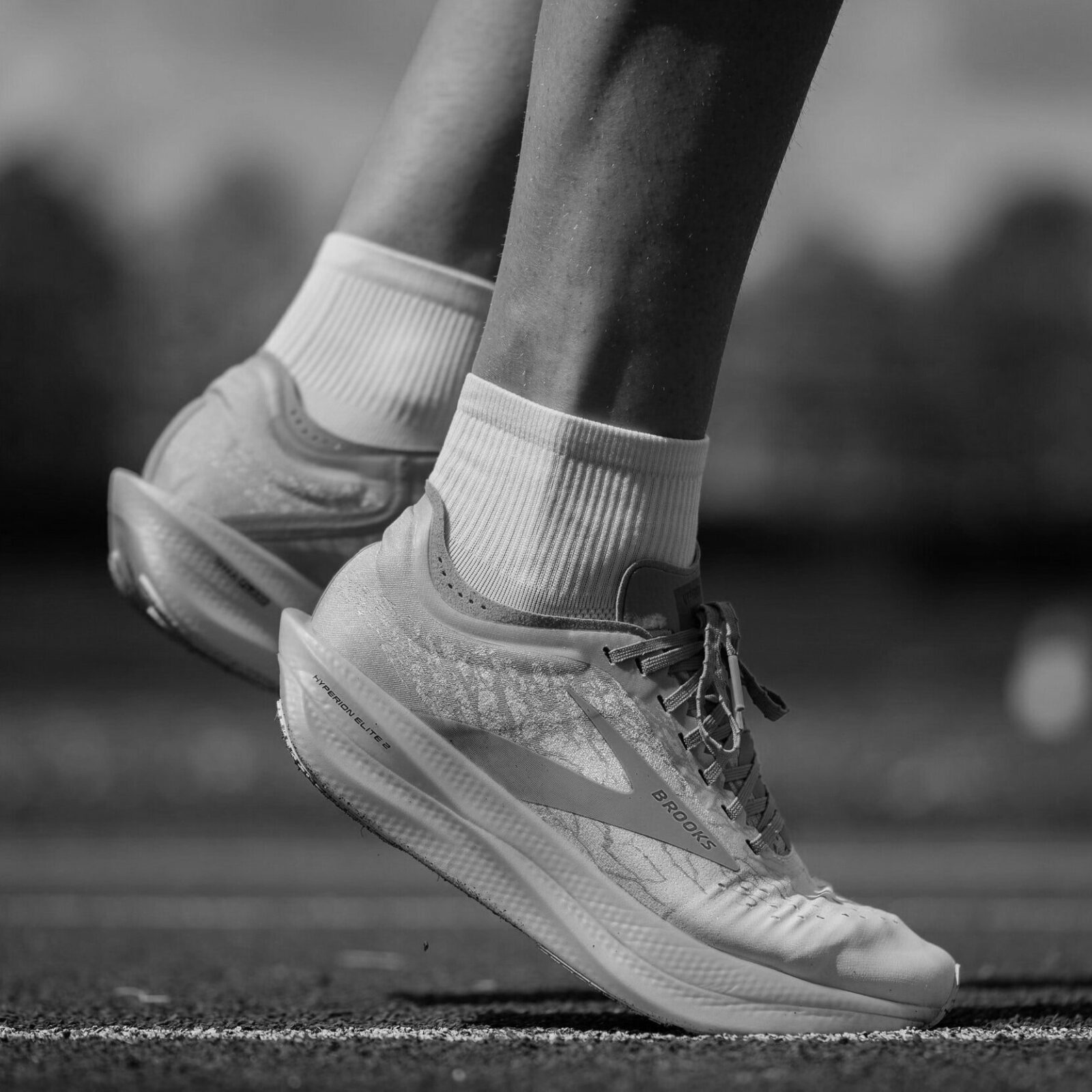GREG LARAIA, ATC & STREETS 101 DIRECTOR.
In this edition of “what’s going on in Greg’s head” we explore the idea of whether or not running shoes reduce the risk of injury. Most running-related injuries come from a combination of training load, the body’s ability to recover, and additional external or internal stressors. For example, running uphill is an additional external stressor, with its own potential consequences (ex: form issues, toasted hamstrings).
The big problem with this topic is that there is not a lot of evidence. Many companies market shoes claiming to reduce injury or to protect the foot more than another shoe. But when you dive into the evidence, we often find a poorly controlled study or that the funding for the study is directly from the shoe company, setting up a very real bias.
There are specific specs of a shoe to consider if you are looking for one that will prevent or reduce the likelihood of injury: heel to toe drop, midsole thickness, minimalist index, innersole thickness, mass, midsole hardness, stability elements, shoe age, usage, and individual fit. Individual fit is why it’s hard for companies to make broad statements about a shoe because it is unlikely that it will provide that benefit for everyone.
Different running shoes were originally designed for broad categories of different types of runners, all trying to achieve the same goal of reducing ground reaction forces and controlling the amount of foot pronation during the loading phase of running. This resulted in three big categories of shoes: neutral (cushioned), stability, and motion control. In today’s market, these categories are more general concepts because there are so many design differences. A cushioned shoe is for the person with a higher arch, more rigid foot, and reduced pronation. A stability shoe is for the runner who needs some arch support and helps overpronating. The motion control shoe is for someone with a lot of foot instability, flat arches, malalignment, and overpronation. Despite the intent of these shoes to reduce injury risk, no evidence indicates that prescribing specific types of shoes reduce the risk of injury.
So, this means that regardless of the broad claims shoe companies make, each shoe will work better for one person and worse for another. You need to look at the specific properties of each shoe broken down so that you can become familiar with what specs work best for you.
Everyone’s foot is different, everyone’s stride is different. So if you are following the person next to you because they told you that a shoe was amazing, remember, it might be amazing for them but not for you. I am not saying that shoes will not reduce injury risk, but it is absolutely necessary to assess each shoe for each individual runner as opposed to accepting broad claims as truth for everyone.
Your best bet is to get a running analysis to learn how your body moves, work on specific things to improve your gait functionally, all while also figuring out the best shoe for you!
If you have questions, I love shoes! Just ask!
*Source:
Malisoux L, Theisen D. “Can the ‘Appropriate’ Footwear Prevent Injury in Leisure-Time Running? Evidence Versus Beliefs”. J Athletic Training. 2020; 55 (12): 1215-1223 https://doi.org/10.4085/1062-6050-523-19

